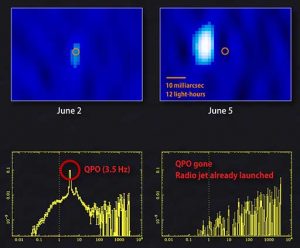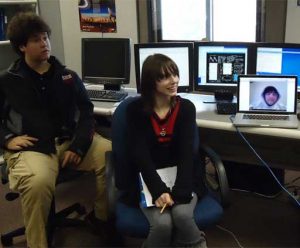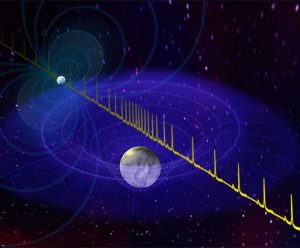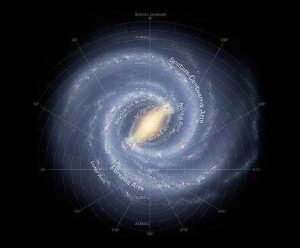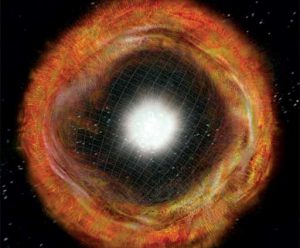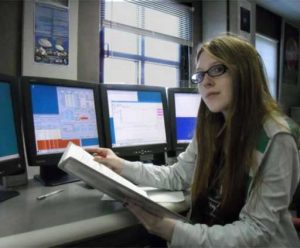Astronomers have gained an important clue about a ubiquitous cosmic process by pinpointing the exact moment when gigantic bullets of fast-moving material were launched from the region surrounding a black hole.
Students Excited by Stellar Discovery
In the constellation of Ophiuchus, above the disk of our Milky Way Galaxy, there lurks a stellar corpse spinning 30 times per second — an exotic star known as a radio pulsar.
Most Massive Neutron Star Discovered
Astronomers using the National Science Foundation’s Green Bank Telescope have discovered the most massive neutron star yet found, a discovery with strong and wide-ranging impacts across several fields of physics and astrophysics.
New Star-Forming Regions in Milky Way
Astronomers studying the Milky Way have discovered a large number of previously-unknown regions where massive stars are being formed. Their discovery provides important new information about the structure of our home Galaxy and promises to yield new clues about the chemical composition of the Galaxy.
Astronomers Find Rare Beast by New Means
For the first time, astronomers have found a supernova explosion with properties similar to a gamma-ray burst, but without seeing any gamma rays from it.
West Virginia Student Discovers New Pulsar
A West Virginia high-school student has discovered a new pulsar, using data from the giant Green Bank Telescope.






